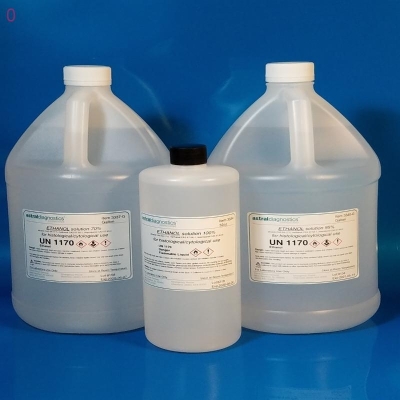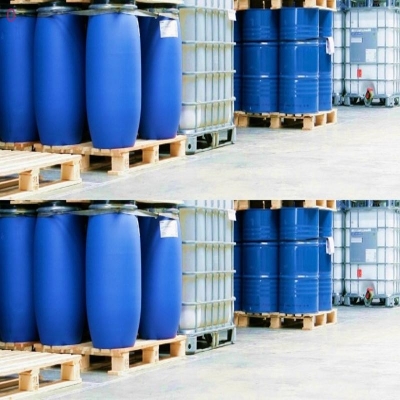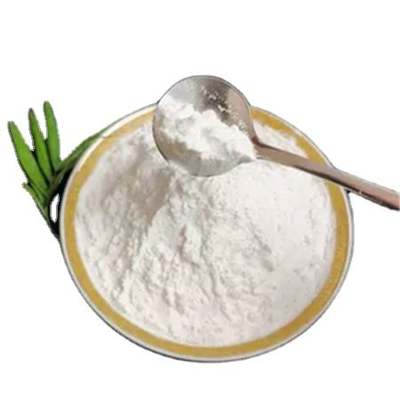-
Categories
-
Pharmaceutical Intermediates
-
Active Pharmaceutical Ingredients
-
Food Additives
- Industrial Coatings
- Agrochemicals
- Dyes and Pigments
- Surfactant
- Flavors and Fragrances
- Chemical Reagents
- Catalyst and Auxiliary
- Natural Products
- Inorganic Chemistry
-
Organic Chemistry
-
Biochemical Engineering
- Analytical Chemistry
- Cosmetic Ingredient
-
Pharmaceutical Intermediates
Promotion
ECHEMI Mall
Wholesale
Weekly Price
Exhibition
News
-
Trade Service
Sinopec and Tsinghua University recently jointly released the "Research Report on Environmental Impact Assessment and Policy Support of Degradable Plastics" pointed out that China's degradable plastics industry technology system has been relatively perfect, and has the ability to control the whole chain independently, but there are still some problems in the use and back-end treatment of degradable plastics, and efforts should be made to solve the serious disconnect between the degradable plastics evaluation standard system and the actual end treatment and disposal methods
.
The industrial technology system is relatively perfect
The "Report" pointed out that in recent years, China's degradable plastic capacity planning has grown rapidly, of which polyterephthalate-butylene adipate (PBAT) and polylactic acid (PLA) are the mainstream material varieties
.
At the same time, the technical system of the degradable plastics industry has been relatively perfect, with the ability to independently control the whole chain
.
According to Sinopec's on-site research in major regions in China, China's PBAT degradable plastics production capacity will be about 293,000 tons in 2020
.
As of April 2021, more than 50 domestic companies have announced their entry into the PBAT industry, with a planned production capacity of 14.
398 million tons/year
.
By the end of 2021, the domestic PBAT production capacity has reached 680,000 tons, and the annual production capacity currently under construction is 1.
28 million tons, covering 18 enterprises, and more than 40 enterprises have announced plans to deploy the PBAT industry, with a planned annual production capacity of about 9.
65 million tons
.
From the existing construction and planning, by the end of the "14th Five-Year Plan", China's annual PBAT production capacity is expected to exceed 11.
5 million tons
.
Due to the high price of 1,4-butanediol (BDO) since 2021, the uncertainty of PBAT production costs has increased, most enterprises have not equipped BDO production equipment, and downstream demand is not as expected, resulting in the postponement of project construction for many new enterprises, and the actual landing capacity is not yet known
.
The "Report" also pointed out that the PLA industry is still in its infancy in China, and there are not many production lines that have been built and put into production, and most of them are small
.
In recent years, some domestic corn deep processing enterprises and biochemical enterprises have also begun to invest in the PLA industry
.
In 2020, China's PLA degradable plastics production capacity is about 220,000 tons, and the current annual production capacity under construction exceeds 600,000 tons, and another 14 enterprises plan to increase PLA production, with a planned annual production capacity of more than 2 million tons
.
If these projects can be implemented, China's PLA production capacity will reach 3.
8 million tons in 2025, becoming the main producer of
PLA in the world.
The purification process of lactide with high optical purity of PLA intermediates is complex and difficult, and has always been the core technical problem
in the production of PLA.
There are barriers to the separation and purification of lactide, most enterprises are still in the stage of research, it is expected that China's current and future main production capacity is still mastered in Anhui Fengyuan, Zhejiang Haizheng and other mature production technology enterprises
.
Zhejiang Haizheng currently has a PLA production capacity of 45,000 tons/year
.
Zhejiang Haizheng said that it has independently mastered core technologies such as lactide, which can solidly promote the industrialization of
PLA in China.
According to reports, Anhui Fengyuan currently has a PLA production capacity of 33,000 tons / year, and also plans to build 4~5 modules, which is expected to release a total of 1.
3 million ~ 1.
5 million tons of new production capacity
.
In addition to cooperating with Glatter, Belgium, Anhui Fengyuan also has a set of technologies
with independent intellectual property rights.
In terms of production costs, according to Anhui Fengyuan, 2~2.
5 tons of corn can produce 1 ton of PLA, 300,000 tons/year PLA device consumes a total of 600,000~750,000 tons of corn, and the production cost of PLA tons is 13,000~15,000 yuan
.
In terms of conversion rate, the conversion rate of lactic acid to lactide is 80%~85%, the conversion rate of lactide to PLA is 90%~95%, and a single module (500,000 tons/year lactic acid, 300,000 tons/year PLA device) can save about 50,000 tons of lactide as a commodity for sale
.
In addition to the above enterprises, other domestic enterprises such as Jilin COFCO, Hebei Huadan and Yongle Biotechnology also have PLA production lines
of different scales.
Generally speaking, domestic enterprises currently have basic independent production capacity in the field of PLA production, and there is no problem that
the core technology is subject to people after large-scale expansion.
In addition to PBAT and PLA degradable plastics, there are also some polypropylene carbonate (PPC) and polyhydroxyalkylate (PHA) degradable plastics production capacity in China, relatively speaking, the capacity planning is less
.
The advantages of degradability have not yet been fully realized
The "Report" believes that there are structural contradictions in the current use of degradable plastic products in China, and the advantages of degradability have not been fully exerted
.
The results of material metabolism research show that nearly 97% of China's degradable plastics still flow to controlled incineration and sanitary landfill, accounting for about 3% of the flow into the environmental direction, and only less than 0.
01% will eventually enter the fermentation and degradation stage
of industrial composting and anaerobic digestion.
The proportion of degradable plastic products actually entering the environment after use, and entering biomass processing facilities to exert degradable advantages is extremely low
.
China's degradable plastic production capacity layout has shown a surplus trend, exceeding the most stringent requirements of future policies by nearly 3 times, especially there are serious structural contradictions, that is, the main degradable plastic products will not leak into the environment
.
The main degradable plastic products are degradable plastic bags, followed by tableboxes and utensils, and again degradable straws, but the vast majority of these products will not leak into the environment at the end of the life cycle, but into incineration and landfill facilities, resulting in the difficulty of solving environmental problems in this part of the products
.
The report also pointed out that in existing end-of-line treatment facilities, the environmental impact of degradable plastics and traditional plastics is not much
different.
In incineration facilities, the environmental impact of degradable plastics is similar to that of conventional plastics; In landfill facilities, the environmental impact of degradable plastics is significantly higher than that of conventional plastics, and the carbon dioxide (CO₂) emission equivalent of 1 kg of PLA in landfill facilities exceeds the CO₂ emission equivalent of traditional plastic incineration by about 35%
due to the generation of landfill gas methane.
The "Report" recommends that the whitelist of degradable plastic application scenarios should be clarified, and the use scenarios of plastic products with direct environmental leakage should be taken as the premise
for the formulation and introduction of alternatives to degradable plastics in various places.
The system of evaluation criteria needs to be revised
The "Report" also pointed out that the current degradable plastic evaluation standard system is seriously disconnected from the actual end treatment and disposal methods, and it is recommended that the test standard be based on the actual operating time of China's industrial composting and anaerobic fermentation processes, and modify the degradation time evaluation indicators
of degradable plastics.
According to the results of empirical degradation studies, PLA can be degraded under industrial composting and high-temperature anaerobic digestion during the existing actual facility operating time, but not under medium-temperature anaerobic digestion conditions
.
Running under 58°C industrial composting conditions for about 30 days, the PLA degradation rate can reach about 70%; In the high temperature and wet anaerobic digestion conditions of 55 °C for about 40 days, the degradation rate can reach about 80%.
The degradation rate under both conditions is better than or close to that of natural cellulose
, respectively.
However, when operating under medium temperature and humidity anaerobic digestion conditions at 35°C for 40 days, the degradation rate of PLA is only about 10%.
PBAT cannot be degraded
in industrial composting, medium-temperature anaerobic digestion and high-temperature anaerobic digestion.
The degradation rate of PBAT is less than 5% when the maximum operating time of a single batch is 30 days in industrial composting facilities, and less than 8% when the maximum operating time of a single batch is 40 days in wet anaerobic digestion facilities at 35°C and 55°C, which is far inferior to natural cellulose and PLA, and far from meeting the actual operating time requirements
of the facility.
In the biomass fermentation process of the actual facility, PHA has the best biodegradable performance
.
Under 58°C industrial composting, 35°C wet anaerobic digestion, and 55°C high temperature wet anaerobic digestion, the degradation rate
of natural cellulose can be better than or close to that.
However, because PHA is a substance that naturally exists in microorganisms to store carbon sources and energy, its biodegradability is too excellent and it is easily degraded
in processing and use.
This has become a major problem
restricting its application.







